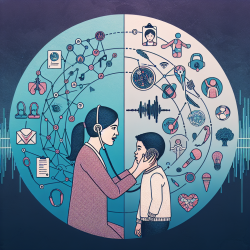Introduction
As professionals in the field of speech-language pathology, we are often tasked with addressing complex communication challenges in children. However, these challenges do not exist in isolation. They are frequently intertwined with broader biopsychosocial factors, including lifestyle elements that may influence a child's development and therapeutic outcomes. The research article, The role of lifestyle in perpetuating substance use disorder: the Lifestyle Balance Model, offers insights that can be adapted to enhance our practice.
The Lifestyle Balance Model (LBM)
The Lifestyle Balance Model (LBM) is a comprehensive framework that considers six domains of biopsychosocial functioning: cognitions, emotions, behaviors, physiology, social context, and lifestyle. While originally developed to address substance use disorders (SUD), the model's principles can be applied to speech-language pathology to support holistic child development.
Applying LBM in Speech-Language Pathology
Incorporating the LBM into speech-language pathology involves understanding how lifestyle factors such as family dynamics, social interactions, and daily routines impact communication abilities. Here are some ways practitioners can leverage the LBM:
- Family and Social Context: Consider the child's family environment and social interactions. Engage families in therapy sessions to create supportive communication practices at home.
- Emotional and Behavioral Support: Address emotional and behavioral issues that may affect communication. Collaborate with psychologists or counselors to provide comprehensive care.
- Routine and Structure: Implement structured routines that promote consistent communication opportunities. Encourage activities that integrate language skills into daily life.
Encouraging Further Research
The LBM emphasizes the interconnectedness of various factors influencing SUD, a concept that can be explored further in speech-language pathology. Practitioners are encouraged to conduct research on how lifestyle modifications can enhance therapeutic outcomes for children with communication disorders.
Conclusion
By integrating the Lifestyle Balance Model into our practice, we can provide more holistic and effective interventions for children. Understanding the broader context of a child's life allows us to tailor our approaches, ultimately leading to better communication outcomes. To read the original research paper, please follow this link: The role of lifestyle in perpetuating substance use disorder: the Lifestyle Balance Model.










